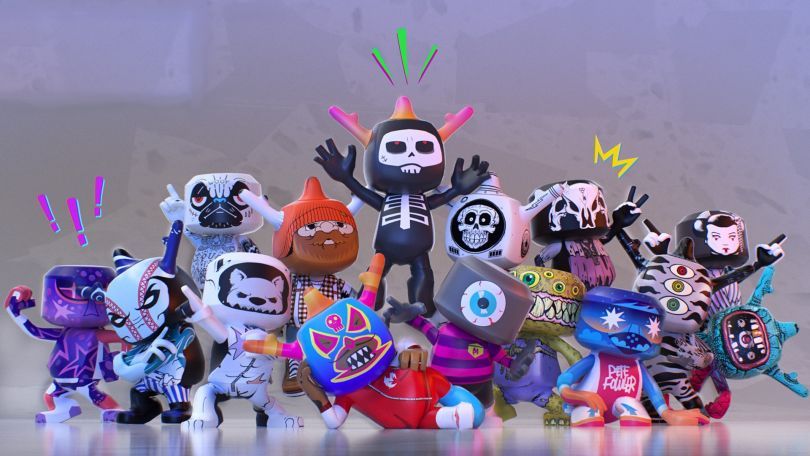By 2020, 100 million consumers will be using augmented reality to shop online and in-store, according to research by Gartner.
While imposing a computer-generated couch into your living room might feel futuristic, this is just the tip of the iceberg for virtual reality use cases in e-commerce: The same Gartner survey notes that 46 percent of retailers plan to incorporate some form of AR or virtual reality into their customer experiences by next year.
And AR is just one of the many emergent technologies shaping e-commerce: Social media platforms are transforming consumer shopping behavior through influencer marketing and new payment infrastructures. Mobile wallet integrations are proliferating as well.
We spoke to a wide range of experts about the e-commerce trends they're watching.
E-commerce Trends To Know
- Personalization
- Artificial intelligence
- Augmented reality
- Data Mining
- Alternative financing
- "Pay What You Want" options
- Omnichannel everything
- Direct-to-consumer selling

Bluecore
We spoke to Bluecore’s Manager, Customer Success Joseph Ford about how the retail marketing technology company is changing the way retailers use data to communicate with shoppers by offering a fundamentally different email solution. Basically, they're able to replace manual processes with an intelligent, AI-driven workflow. And according to Ford, increased personalization is just the beginning.
What are the top three e-commerce trends you're watching that are significantly impacting the industry?
Artificial Intelligence: “The ability to track and store large amounts of activity and customer data creates a need for a smarter, more efficient way to aggregate and disseminate all of that information meaningfully and actionably,” said Ford. “AI can bring that to the table for e-commerce.”
Personalization: “Personalization is expanding beyond just the historical use of manually creating a customer journey using customer attributes,” Ford said. “By incorporating activity data utilizing AI, businesses can curate the marketing message (content and products) on an individualized basis. This has the potential to naturally increase engagement and loyalty.”
Augmented Reality and Immersive Buying Experiences: “AR use has already significantly grown with furniture, eyewear and makeup companies, but may not be limited to those verticals,” Ford said. “With the ever-increasing e-commerce conversions year over year, other verticals may look to use this technology to assist with increasing purchase satisfaction and decreasing the rate of returned merchandise.”
"Data is stated to be the new oil, but unrefined data cannot really be utilized effectively."
What under-the-radar e-commerce trends are you watching?
Data Mining: “Data is stated to be the new oil, but unrefined data cannot really be utilized effectively,” Ford said. “Companies have been collecting significant amounts of data on unknown visitors, subscribers and purchasers. Tying all the data back together in a strategic way and determining the next actionable steps still presents a challenge for many marketers.”
One-to-One Predictive Marketing: “Historically, subscribers have been aggregated within buckets that don’t capture their true individualized behaviors,” Ford said. “Personalized predictive marketing allows the message to get to users based on the individual’s experience and timing, avoiding bucketing them in large groups.”

SevenFifty
Adam Van Fossen, CMO of SevenFifty, told us how the e-commerce trends he’s watching for 2020 relate to the company’s position in the alcohol industry, including an increase in localized spending and a greater emphasis on data to track buying behavior.
What are the top three e-commerce trends you're watching that are significantly impacting the industry?
Localized E-commerce: “First, we are continuing to see the rise of localized e-commerce,” said Van Fossen. “Alcohol inventory, availability and regulations vary greatly region-to-region so it’s impossible to take a one-size-fits-all approach to online shopping. Alcohol delivery services like Drizly and Doordash are filling part of the on-demand void, but we are also seeing a rise in platforms that enable local shops to create their own white-label shopping experience directly tied to store-level inventory.”
Direct-to-Consumer: “Secondly, the adoption of direct-to-consumer: Forty-four states allow at least some interstate shipping of alcohol from wine, beer and spirits producers,” said Van Fossen. “People are seeking out small-batch, locally made brands so there’s a lot of untapped opportunities to engage local consumers online.”
"We are continuing to see the rise of localized e-commerce."
What under-the-radar e-commerce trends are you watching that the industry isn't talking about?
E-commerce on a B2B Level: “Under-the-radar from a consumer perspective is the digital transformation that is happening at the wholesale level within the beverage alcohol industry,” Van Fossen said. “In the past, new product discovery has been a huge challenge for wholesale buyers. As a result, consumers pretty much saw the same products wherever they went. Now, retailers are engaging in e-commerce on a B2B level and have more visibility into what’s available and what they can purchase online.”
How will these trends impact the way consumers buy things online in the future?
“As it pertains to our business, the rise of e-commerce is just one facet of a digital revolution that we see impacting all parts of the alcohol supply chain,” said Van Fossen. “Brands will leverage market intelligence data and targeted advertising platforms like ours that tap into consumers and will trade online buying behavior. All of this means even more opportunities to add value to the supply chain that currently exists.”

Bread Finance
Bread Finance’s content marketing manager Mark Kersteen has a broad perspective of the alternate-financing landscape. And he sees a decline in private-label credit cards and a rise in loyalty programs as major trends this year. Below, he told us why he thinks consumers are looking for a different way to pay.
What are the top three e-commerce trends you're watching that are significantly impacting the industry?
An Improved Checkout Experience: “One-click checkout and more streamlined navigation are driving up customer expectations and will be a point of increasing competition for e-commerce companies,” said Kersteen.
Alternative Financing: “Alternative financing will continue to attract debt-wary young consumers,” said Kersteen. “As they leave traditional institutions and payment solutions behind, new fintech players will find ways to tap into their desires and different buying behaviors.”
“Credit cards are waning in popularity and a fragmented media landscape means that traditional advertising is losing its formerly ironclad hold over customers’ wallets,” Kersteen added. “Shoppers, especially the younger demographic who lived through the most recent financial crash, are wary of accruing more debt and are swayed by more flexible ways to pay for what they want and need. The customer experience is becoming a bigger part of the equation and payment options are evolving to become a bigger part of the buyers’ journey.”
"The customer experience is becoming a bigger part of the equation."
More Loyalty Programs: “Loyalty programs are growing,” Kersteen said. “Combining them with mobile payment solutions and wallets will only further embed them in the e-commerce experience.”
“Shoppers are consolidating their wallets and looking for other options instead of store credit cards, like app-based loyalty plans.”
What under-the-radar ecommerce trends are you watching that the industry isn't talking about?
“Pay What You Want” Options: “The real cutting edge of payments in the e-commerce space includes brands like Everlane, who offer more flexible and transparent pricing on select items” Kersteen said.

FabFitFun
Vice President of Merchandising Ryan Waymire said, “Consumers will reap huge benefits as their e-commerce experiences become more personalized, immersive and convenient.” This is a trend that FabFitFun already utilizes to speak directly to users’ needs and wants, he said.
Personalization: “Consumers are continuing to seek more personalized shopping experiences,” Waymire said. “With Amazon providing an “everything” store for commodities, consumers are now looking to retailers and brands to renew their sense of discovery and surprise and to recommend products best-suited to them. Time-starved consumers want retailers to simplify the shopping experience by providing personalized shopping, e-mails, and content that speaks directly to their needs and wants. Retailers must use data, trends, and merchant “gut” to elevate their personalized shopping experiences, provide more meaningful products and content, and simplify the shopping experience.”
"Consumers expect commerce and content to be blended seamlessly."
Enhanced Delivery Options: “Retailers continue to raise the bar and consumer expectations on shipping,” Waymire said. “Consumers expect enhanced delivery options through increased shipping speeds and alternative fulfillment methods like “pick up in store.” The expectation is that e-commerce is more convenient and efficient than shopping in physical stores. Retailers must continue to invest in logistics, fulfillment and operations to continue to elevate the delivery experience for consumers.”
Content is Commerce: “E-commerce is no longer about just selling stuff. Consumers expect commerce and content to be blended seamlessly,” Waymire said. “Retailers must move from the “what” of products and brands to the “why.” Consumers want to know why products, ingredients, materials, trends and brands are right for them. Retailers must continue to find ways to tell richer, more 360-degree stories and consistently tell those stories throughout the e-commerce customer journey.”
“Community Consumers”: "This community can be as simple as reviews or a loyalty program or as comprehensive as a full-fledged social media or social shopping platform,” said Waymire. “E-commerce is no longer a solitary activity. The experience should be richer than shopping at a mall with friends and family. Retailers must continue to elevate the social aspect of e-commerce to provide consumers with the ability to interact with each other, brands, and retailers.”

Mythical Games
“We’ve seen that players want to get involved, have a bigger stake and be closer to the games they love,” says Mythical Games Vice President of Marketplace Services Rudy Koch. “We believe that by building economies that are inclusive of the game entrepreneur, pro players, content creators, and all gamers, we can allow for new and interesting revenue opportunities.”
Monetization from Streaming Platforms: “We’ve seen some remarkable shifts in the games industry over the last several years: Streaming on Twitch and YouTube quickly became multi-billion dollar fixtures,” said Koch. “Today, it is not only a career for many, but also a business where e-commerce plays a significant role in allowing streamers to monetize, thus creating a new category of entrepreneurs.”
eSports Fans as Consumers: “More recently, eSports gained incredible momentum becoming its own multi-billion dollar vertical within games,” said Koch. “This spawned a new opportunity that allowed fans to support their favorite teams by buying merchandise and memorabilia, while allowing pro gamers and teams to turn themselves into sustainable businesses, which will further the development and growth of the eSports world.”
"E-commerce plays a significant role in allowing streamers to monetize."
Free-to-Play Gaming: “Over the last 10 years, we’ve seen games continue to merge with major paradigms like e-commerce and SaaS,” said Koch. “In the past, the games industry was dominated by the retail model. Gamers would go to their local store to pick up a copy of their favorite game, and that was usually the end of it. Today, some of the most popular games in the world are free-to-play. Instead of selling them at retail, game developers rely on complex and flourishing item-based, in-game economies and digital distribution systems. Embracing the evolution of e-commerce has allowed for record-breaking revenue for the games industry and will continue to be the trend.”
Grey Markets: “Grey (and black) markets have been a major part of the games industry for decades,” Koch said. “They were fringe and illegitimate but they were generating billions globally. Unfortunately, grey markets were seen as a thorn in the industry because they take revenue away from developers and break the game experience for the honest gamers. Significant resources were committed to squashing them over the years, but with the advent of free-to-play and item-based economies, they’ve only grown in orders of magnitude.
“At Mythical, we see grey markets as a massive opportunity to grow in-game economies for players,” he said. “The simple fact is that these illegitimate markets have only been growing with the games industry, which shows that the demand is clearly there.”

Flowspace
Ben Eachus, CEO of Flowspace, said the future for consumers will be equal parts instantaneous and flexible.
“They will be able to get what they want, at a speed they desire, at a venue they prefer and on terms that are suitable for them,” Eachus said. “Organizations will need flexibility and reliability in their supply chain at scale, powered by real-time intelligence that is insightful on where demand is rising and how to modify their supply chain.”
Fulfillment Centers are Table-Stakes: “Amazon Prime has fundamentally changed the customer expectations on delivery speeds. Receiving products in two days is quickly becoming table stakes for any e-commerce brand or retailer,” said Eachus. “This has a direct impact on the number of warehouses and fulfillment centers these companies need. For example, enabling two-day delivery requires three fulfillment centers across the country, while one-day delivery requires staging inventory in more than 11 fulfillment centers. Flowspace enables any brand to have a national fulfillment footprint all on a single software platform in a matter of days.”
“For every $100 spent online, $20 will go into fulfillment and logistics,” he added. “To effectively compete, brands need to shorten the distance their products travel to customers through optimal inventory placement and fulfillment strategy.”
Omnichannel Everything: “Customers today expect the flexibility to purchase products online across multiple platforms and across multiple in-person formats (pop-up stores, company owned retail locations or big box stores)” said Eachus. “This omnichannel requirement is putting pressure on supply chains and fulfillment strategies to change rapidly, as brands need to support all of these channels seamlessly.”
"Customers today expect the flexibility to purchase products online across multiple platforms."
Full-Service Commerce Platforms: “The next big evolution of e-commerce will be propelled by social media platforms,” said Eachus. “Companies like Instagram, WhatsApp and Pinterest will not just be content and product discovery platforms, but also evolve into full-service commerce platforms where consumers can find, engage and purchase products directly from brands without leaving the social apps.”

Adtaxi
“In the e-commerce industry, we understand that today’s shoppers are hard to impress,” Zlatin said. “The absence of personalization and brand scent drives shoppers away. Additionally, today's shoppers aren’t as loyal as they used to be. Personalization with e-commerce customers is the key to push shoppers toward conversion as well as increasing their lifetime value.”
“Oftentimes, we see that the path to conversion is segmentation via paid media, email and retargeting of product shoppers,” she added. “Providing personalized communication, coupons and content will create a huge impact on a client’s shopping experience, which in turn drives brand loyalty.”
"We recognize the need to be present in multiple platforms during the discovery and conversion phases.”
Omnichannel Strategy: “Looking at a three-year window, we see that consumer confidence in e-commerce stays strong and grows year over year,” said Zlatin. “Mobile e-commerce shoppers surpassed $3 billion in purchases this past Cyber Monday. We also see that online shopping now exceeds 51 percent of total retail spending in the U.S. This has a tremendous impact on retail businesses with a digital component. It requires most business owners to adjust to an omnichannel business model incorporating e-commerce and retail sales within one holistic strategy.”
“We recognize the need to be present in multiple platforms during the discovery and conversion phases, Zlatin said. “It becomes more evident when examining attribution on different platforms and the number of touchpoints needed for conversion events. When looking at the customer journey, we need to understand the role each ad platform has in the journey and personalize our strategy by offering, product and platform. Going into 2020, we’ll watch how the industry’s holistic approach to marketing evolves to include omnichannel strategy and omnichannel creative execution.”
Social Media in E-commerce: “Social media has impacted our daily life including our path to purchase. Social media is an important driver for new brands and businesses to be discovered, creating a strong relationship with the consumer due to the amount of time people spend on platforms and how the platforms favor engagement,” Zlatin said. “Social platforms constantly evolve to meet the needs of online shoppers. Great examples would be the different call-to-action buttons on Facebook and the ability to checkout within the platforms.”

ShopRunner
Shreena Amin said consumers today expect faster deliveries. As such, the senior director of product management at ShopRunner said more companies will soon become their own warehousing and distribution centers to keep up.
What are the top three e-commerce trends that are impacting the industry?
Social shopping is transforming how customers discover and buy products and how brands find and connect with customers. Instagram has a vibrant influencer community and a growing toolset for brands, which includes checkout within the social media platform.
Omnichannel is finally becoming a reality as retailers turn their stores into fulfillment centers. Customers can increasingly choose whether they’d like to buy online or pick-up in-store, or get same-day deliveries. Big retailers like Target are leading the way, but smaller brands and department stores are investing to catch up.
Finally, the wide adoption of mobile wallets is making both mobile and in-store shopping easier. Retailers are starting to integrate Apple Pay into their websites so that checkout can be as easy as a fingerprint scan.
"Adoption of mobile wallets is making phone and in-store shopping easier."
What under-the-radar e-commerce trends are you watching?
Advances in computer vision technology have the potential to transform e-commerce. Searching with pictures instead of words or seeing how a product will look without trying it on are a fraction of what computer vision could enable. A natural extension of this technology is bringing the best parts of an in-store experience to e-commerce via augmented or virtual reality. The visual and experiential nature of shopping makes it a great playground for augmented reality.
How will these trends impact the way consumers buy things online in the future?
I see a future where all these technologies come together to create a new golden era for shopping. Shopping online can be just as immersive as shopping in-store. It can be more social and more convenient than going to the store.
We are making product investments to make it easier for retailers and brands to participate in social e-commerce ecosystems. We are exploring ways to turn our two-day shipping into same-day delivery and partnering with Apple to bring Apple Pay to more retailers.

Home Chef
Almost 23 million Americans will be using voice commands to buy products by the end of this year, according to eMarketer. Home Chef’s Senior Director of Digital Marketing Shane Smith said customers will expect better shopping experiences by asking Siri or Alexa to order products for them in the next year, so optimizing voice commands is an initiative more e-commerce companies will adopt soon.
What are the top three e-commerce trends that are impacting the industry?
The first is the continued rise of direct-to-consumer and subscription-based e-commerce models. Companies continue to see the value in owning their own customer data and brand perception. So it will be interesting to see if more brands leave marketplaces in favor of their own home-grown, DTC sites and apps. I think it’s also likely that subscription-based e-commerce companies will continue to multiply as investors and executive teams gravitate toward the recurring revenue nature of subscription-based businesses.
The second trend is evolving attribution solutions. The silver bullet for marketing attribution remains elusive but the quest will continue in 2020. You’ll see brands double down on efforts to bring media mix modeling in-house, along with vendor partners improving their incremental testing abilities so that brands can get more accurate at measuring the effectiveness of their customer acquisition channels.
The third is augmented reality adoption. One of the obstacles of e-commerce shopping is the inability to touch the product before purchasing. As augmented reality and mobile technology evolves, consumers will have better opportunities to get a sense of how they will interact with products in real life without having to leave their homes.
"Companies will become more cognizant of their carbon footprint."
What under-the-radar e-commerce trends are you watching?
Facebook and Instagram have been easing their way into social commerce for years. It’s possible that social commerce goes mainstream in 2020 with more consumers making purchases directly within social apps rather than on brand websites or apps.
Similarly, voice search and in-home assistants have burst onto the scene, but consumer adoption fails to keep pace with the buzz. In 2020, we will likely see steady growth as consumers will continue to expect better experiences when searching for products via voice.
Companies will also become more cognizant of their carbon footprint as employees and customers push for more eco-friendly solutions. It’s likely we will also see increased growth from rental e-commerce brands and “recommerce.”
How will these trends impact the way consumers buy things online in the future?
Customers will continue to expect personalized, seamless and curated experiences from e-commerce brands. They will search for products however and wherever they want, with technology-enhanced experiences that bring products to life through their mobile devices. They will want to easily ask questions and get timely answers using chatbots. Customers will also expect a quick checkout process via one-click or social checkouts.





